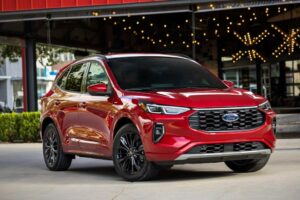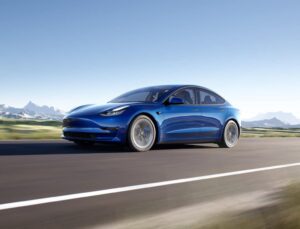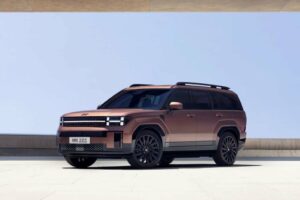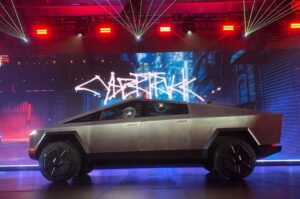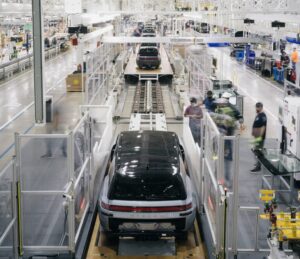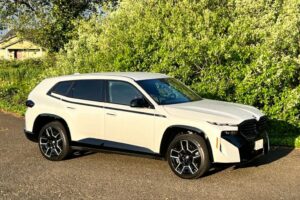The new tax credits for consumers built into the Inflation Reduction Act will do little to speed up the transition to electric vehicles where affordability remains a — if not “the” — critical issue.
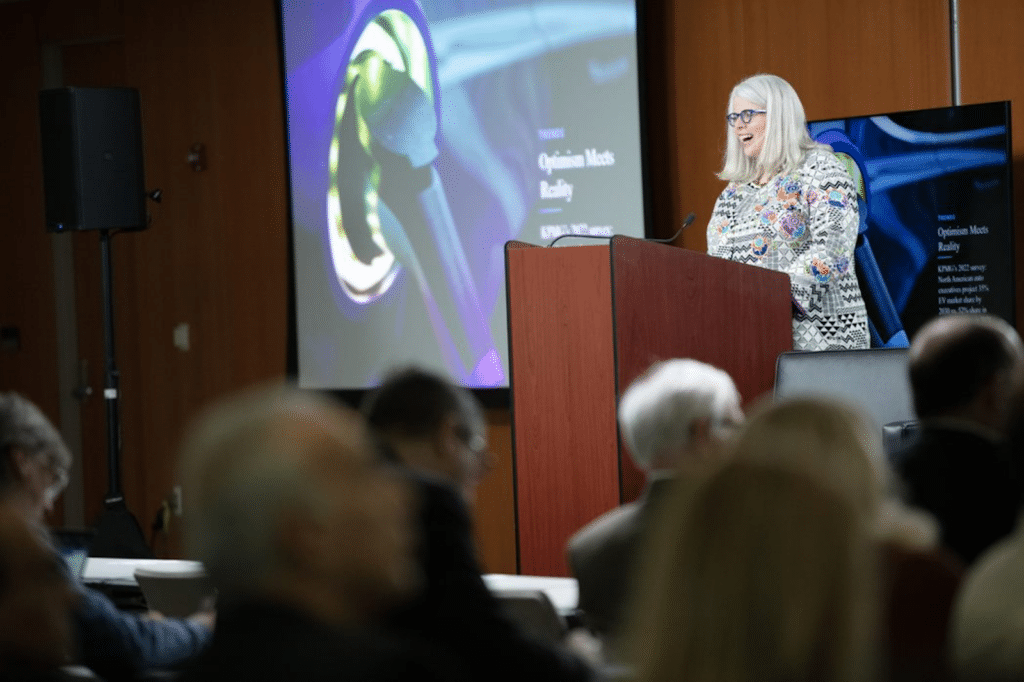
The ability of consumers of varying economic realities to buy electric vehicles is pivotal to their success, according to panelists at the annual Automotive Insights Symposium in Detroit held by the Federal Reserve Bank of Chicago.
“If you can afford to buy an electric vehicle, you can’t use the tax credit because of the income caps,” said Peter DeLongchamps, senior vice president Group 1 Automotive, one of the nation’s largest automotive retailers during the discussion at the symposium, which revolved around the affordability of electric vehicles.
Congress limits credits for consumers
The U.S. Treasury Department won’t have the final rules governing the tax credits ready until March 31. But the credits are limited by family income and the price of the vehicle under the new law.
The U.S. Congress, fearing the law would favor the affluent, said If a buyer earns under $150,000, or $225,000 as the head of household, or $300,000 for joint filers, they could be eligible for up to a $7,500 credit for the purchase of an EV. But, according to the IRS, SUVs, vans and pickup trucks must cost less than $80,000 to qualify for the credit, while other vehicles must cost less than $55,000 to qualify.
For used vehicles, the income cap is $150,000 for joint filers, $112,500 for the head of household, and $75,000 for all other filers, but the cars must cost less than $25,000 to qualify.

Few used electric vehicles will qualify for the credit in the next few years, according to David Gohlke, Energy and Environmental Analyst at the Argonne National Laboratory, who noted most battery-electric vehicles are currently purchased in more affluent communities on the Coasts and in big urban areas inland. Few EVs are purchased in the middle of the country where, at the same time, the preference for larger vehicles such as pickup truck and full-size SUVs seems to be growing, Gohlke said.
At the same time, the people in the middle of the country drive longer distances, and the “upfront” cost pushes an electric vehicle out of reach for most buyers, he said.
Kristin Dziczek, policy advisor, Federal Reserve Bank of Chicago, noted electric vehicles generally cost 35% more than a vehicle with a conventional powertrain. She added even with Inflation Reduction Act, the subsidies offered in the U.S. for switching to an electric vehicle trail the subsidies offered in China and Europe where EV penetration is steadily climbing.
The average price of new vehicle in the U.S. now tops $49,500, according to Charlie Chesbrough, senior economist and senior director of Industry Insights Cox Automotive. “There’s no reason to think these prices are coming down,” he added.
Car makers adopt strategies to boost affordability
However, Dan Nicholson, General Motors vice president of Electrification, Controls, Software & Electronics, said GM believes its strategy will bring more affordable electric vehicles to a wider audience by the middle of the decade.

Buyers are more likely to switch to electric vehicles than to change segments, Nicholson added. GM’s strategy calls for offering vehicles in multiple segments, including pickup trucks, utility vehicles and crossovers, using the Ultium platform for the offerings in each segment. The common platform allows GM to offer EVs at affordable prices, he said.
Scale remains a critical part of driving down costs in the automotive industry and GM will be able to build more than 1 million EVs by the middle of the decade, Nicholson said. “GM is moving out of the first phase and moving into the next phase,” he said.
With the Ultium platform GM can re-use the electric motors, power electronic and wireless battery management systems on a variety of models. There are also 25% fewer part numbers than a vehicle with an internal combustion engine where the number of engine and transmission combinations complicated efforts to reduce parts.
GM also plans to build a front-wheel drive as well as a rear-wheel drive version of its battery-electric Chevrolet Blazer. GM could not have done that with a conventional powertrain, he noted. The reduction in the time needed to develop a new vehicle also translates into substantial savings, he said.
Aditya Jairaj, senior director, EV Transformation Office Nissan USA, said the automaker is pursuing ways to make its electric vehicles more valuable to customers by covering every vehicle segment. Nissan EVs, starting with the Leaf, will have “Bi-Directional” Charging so a customer can run their house off the vehicle, eliminating the need spend thousands of dollars on a standalone generator.
Nissan is also promising to re-purchase EV batteries from consumers. The batteries have value and Nissan wants to re-capture it, he said.
Rod Lache, managing director, Wolfe Research, said he’s optimistic the industry can master the affordability challenges of the transition to EVs. Battery costs will start to fall, he said, noting beside the consumer tax credits, the IRA also includes credits for manufacturers to build batteries, which will help drive down the cost EV power units.
The high cost of commodities, which for the past year interrupted the decline in the cost of battery cells, are beginning to stabilize as new investment reaches the sector, he said. Manufacturers also are looking for substitutes for the most problematic materials such as nickel.
- SEO Powered Content & PR Distribution. Get Amplified Today.
- Platoblockchain. Web3 Metaverse Intelligence. Knowledge Amplified. Access Here.
- Source: https://www.thedetroitbureau.com/2023/01/affordability-critical-issue-for-evs-even-with-new-tax-credits/
- 000
- 1
- 35%
- a
- ability
- Able
- According
- Act
- added
- adopt
- advisor
- affordable
- All
- allows
- analyst
- and
- annual
- areas
- Argonne National Laboratory
- around
- audience
- automotive
- automotive industry
- average
- Bank
- batteries
- battery
- because
- Beginning
- believes
- Big
- boost
- bring
- build
- built
- buy
- buyers
- Calls
- cap
- caps
- cars
- Cells
- challenges
- change
- charging
- Charlie
- Chevrolet
- chicago
- China
- combinations
- come
- coming
- Commodities
- Common
- Communities
- complicated
- Congress
- consumer
- Consumers
- controls
- conventional
- Cost
- Costs
- could
- country
- covering
- credit
- Credits
- critical
- Currently
- customer
- Customers
- David
- dc
- decade
- Decline
- Department
- develop
- Director
- discussion
- dollars
- Dont
- down
- drive
- driving
- during
- each
- Economic
- Economist
- efforts
- Electric
- electric vehicle
- electric vehicles
- Electronic
- Electronics
- eligible
- eliminating
- energy
- Engine
- ensure
- environmental
- Ether (ETH)
- Europe
- EV
- EV batteries
- Even
- Fall
- family
- favor
- Fed
- Federal
- federal reserve
- Federal Reserve Bank
- few
- final
- First
- For Consumers
- from
- General
- generally
- generator
- GM
- Group
- Growing
- head
- Held
- help
- High
- House
- household
- HTTPS
- in
- includes
- Including
- Income
- industry
- Industry Insights
- inflation
- insights
- internal
- interrupted
- investment
- IRA
- IRS
- issue
- IT
- laboratory
- larger
- largest
- Law
- likely
- Limited
- limits
- little
- longer
- looking
- make
- Makers
- management
- managing
- Managing Director
- Manufacturers
- March
- master
- materials
- max-width
- Middle
- million
- models
- more
- most
- Motors
- moving
- multiple
- National
- Nations
- Need
- needed
- New
- new investment
- next
- Nickel
- Nissan
- noted
- number
- numbers
- offer
- offered
- offering
- Offerings
- ONE
- Optimistic
- Other
- part
- parts
- past
- People
- phase
- Pickup
- pivotal
- plans
- platform
- plato
- Plato Data Intelligence
- PlatoData
- policy
- Policy Advisor
- power
- president
- price
- Prices
- promising
- purchase
- purchased
- put
- qualify
- reach
- Reaches
- ready
- realities
- reason
- reduce
- remains
- research
- Reserve
- reserve bank
- retailers
- revolved
- Run
- Said
- same
- Savings
- sector
- seems
- segment
- segments
- senior
- So
- Software
- Soon
- Speaks
- speed
- spend
- stabilize
- standalone
- start
- Starting
- strategies
- Strategy
- substantial
- success
- such
- SUVs
- Switch
- Symposium
- Systems
- tax
- tax credit
- The
- the Law
- their
- thousands
- time
- to
- Tops
- Transformation
- transition
- treasury
- Treasury Department
- truck
- Trucks
- u.s.
- u.s. congress
- under
- units
- urban
- Urban Areas
- USA
- use
- utility
- Valuable
- value
- variety
- vehicle
- Vehicles
- version
- Vice President
- washington
- Washington DC
- ways
- which
- while
- WHO
- wider
- will
- wireless
- would
- year
- years
- zephyrnet

